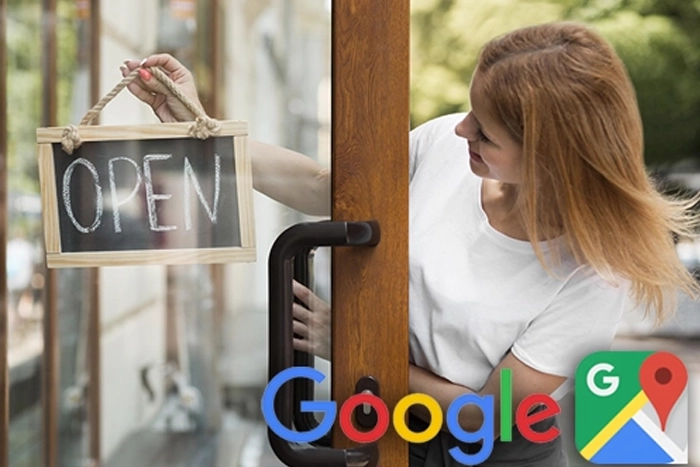
Local Advertising w/Google Ads & Google Merchant
Google Local Inventory Ads has become a powerful marketing tool for marketers and retail business owners. They’re particularly helpful to those with physical stores and are advertising their products and services online.
Their significance continues to rise as more people begin using their devices to research products on the web. The rising acceptance of click-and-collect is also helping make Google local marketing an important asset in publicizing a business.
Its incorporation in your advertising strategy simplifies the ability to reach potential shoppers while they’re in ‘research mode.’
Google Local Ads: What Are They?
They’re a type of promotion feature intended for advertisers and store owners that have physical locations. Advertisers and store owners can use local inventory ads (LIAs) to showcase their products and services to nearby customers using Google for research purposes.
Essential product information, e.g., product prices and availability can be shown to potential customers using these Google shopping ads for ecommerce. Other details that can be accessed by users include in-store details such as store distance, opening hours, reviews, and directions.
All of these help make Google LIAs an efficient way to close the gap between in-store and online experiences.
For instance, if a customer is looking to buy a winter coat and is interested in trying it on before completing their ecommerce purchase, they’ll search for “women’s puffer coats near me.” The search engine will, in turn, show LIAs of the same products.
Important of Local Inventory Ads
The increasing popularity and importance of Google Local has to do with how much the shopping ecosystem has changed in the last 20 years. Unlike before, consumers now have access to computers and smartphones that they can use to search for products.
These devices allow them to find crucial store information before they can venture out of their homes or offices to go shopping. The information they gather about a store and its product and service offerings will enable them to decide on where to shop.
Therefore, it’s important for store owners to try to reach potential customers while they’re in the research phase for them to complete a sale. This is the only way they can be able to provide consumers with the best shopping experience.
Understanding the Difference Between Google Shopping and Google Local
While Google Shopping and Google Local Advertising may seem similar, these two are quite different. Three primary differences set them apart.
- Google shopping ads have one goal — drive online sales. This is what makes them ideal for eCommerce ventures. However, Google LIAs are designed to cater to businesses with physical stores and which wish to increase their in-store foot traffic.
- Where customers end up also differs. For example, shopping ads will take users to the product pages thus simplifying the shopping experience. The LIAs, in contrast, use either a Google-Hosted or a Merchant-Hosted Storefront that stores information about local products and services.
- The listings differ in terms of their appearance. The Google shopping ads concentrate more on online shopping and may display discount and shipping information. LIAs will feature labels such as ‘Pick up today’ and ‘In-store.’
Both methods are effective, but deciding on which one to use will depend on your line of business and your marketing objectives.
Requirements for Google LIAs
Before you can set up the LIAs for your retail business, there’re a few requirements that you must satisfy first.
- Your business has a traditional store setup accessible by walk-in customers
- The goods on sale don’t require additional purchases, e.g., a membership to the store
- Your business is in a country that allows LIAs to run, such as the US, the UK, Australia, France, Denmark, and Canada.
- You abide by Google shopping ad policies, especially those related to technical quality standards, restricted content, and prohibited content and practices.
Pros and Cons of LIAs
There are both upsides and downsides to using LIAs. Marketers who can successfully set up google local marketing ads while minimizing the downsides can look forward to generating promising results. They’ll also find that these ads can significantly impact the store’s advertising strategy.
Pros
- Drive foot traffic to your store: Showcasing store locations and product availability is an excellent way to entice local consumers, which is why advertisers love them.
- Merge online with offline shopping: LIAs enable you to close the gap between physical and online shopping. Displaying them can influence whether a user chooses to shop at your store or over at your competition.
- Decidedly relevant shopping knowledge: LIAs have become relevant as they work by targeting customers who are actively looking to shop in a certain geographic area. It means they can reach users with a high intent, thus boosting the probability of in-store purchases.
Cons
- Complex set-up: You need to integrate and update product information regularly when setting up LIAs. This can prove challenging for store owners who have large inventories or whose stock is ever-changing.
- Inventory management: Store owners need to have an active local inventory advert management system to manage their local inventory efficiently. This helps in ensuring that the product availability data is always up-to-date and accurate.
Understanding the upsides and downsides of Google local advertising, in particular, the downsides is crucial for store owners looking to leverage LIAs. It enables you to take measures to help in mitigating them to ensure the LIAs add value to your online advertising efforts.
Conclusion
Google LIAs assist in bridging the gap that exists between online and in-store shopping experiences. They enable businesses to improve their product visibility by targeting customers with high intent.
Moreover, they get to do this when users are actively in research mode. While setting them up may need some upfront technical effort, a professional can help with this. Remember, google local marketing is proven to improve performance for store owners, making them a plus for any advertising strategy.



